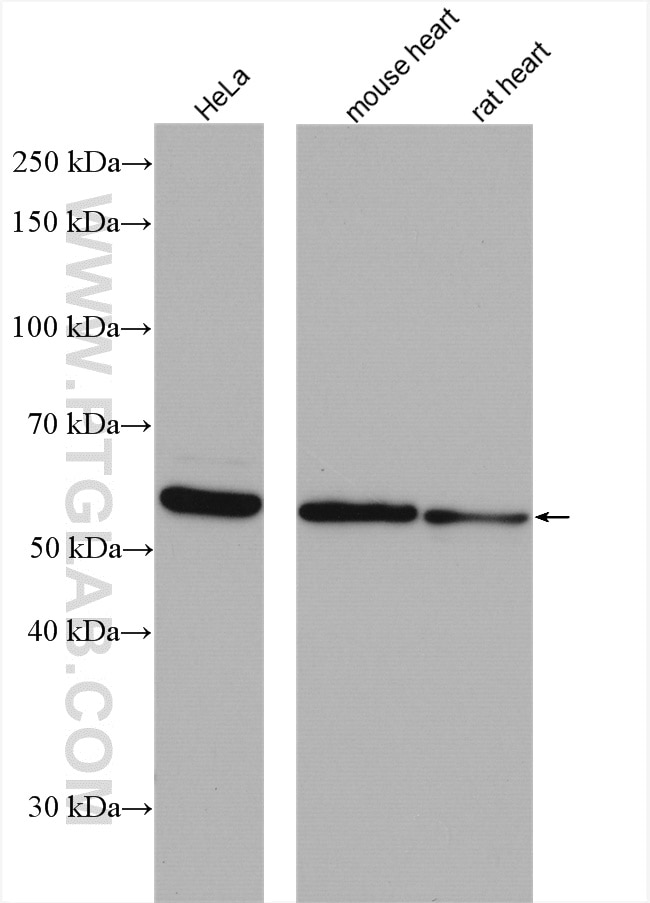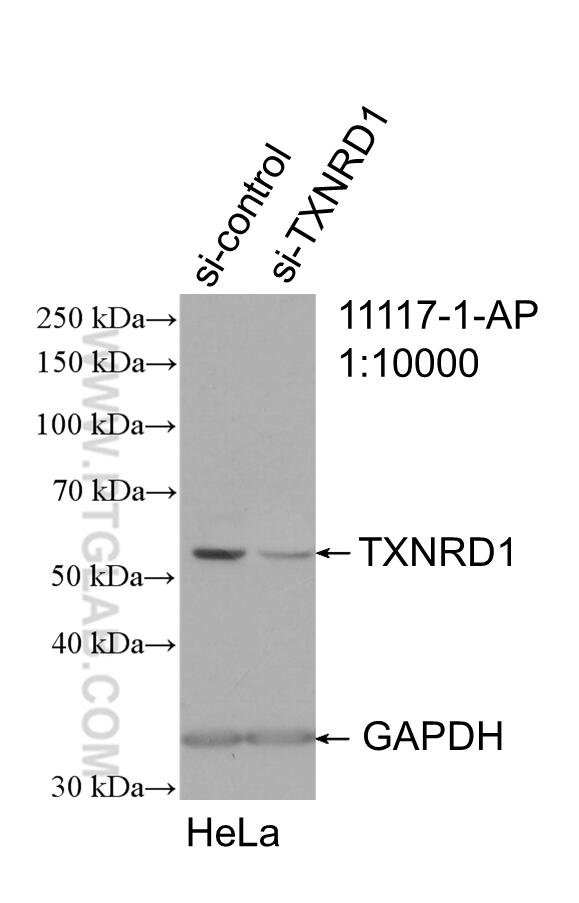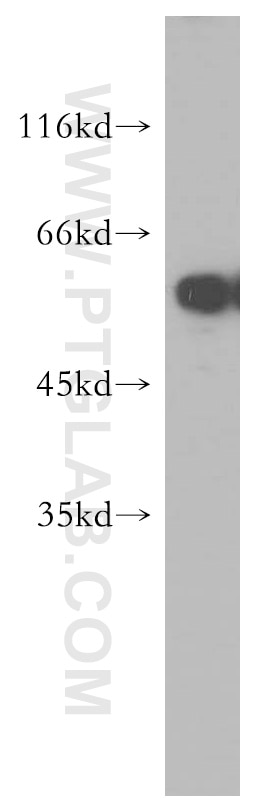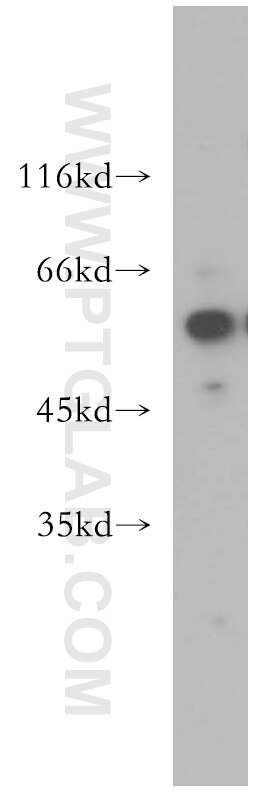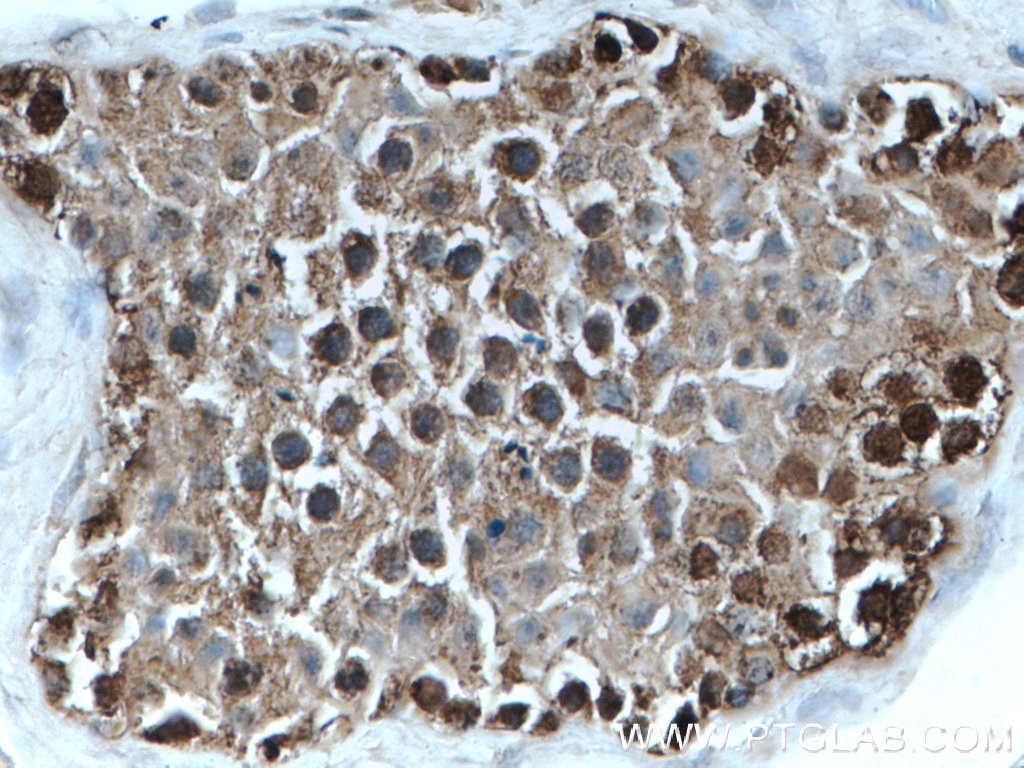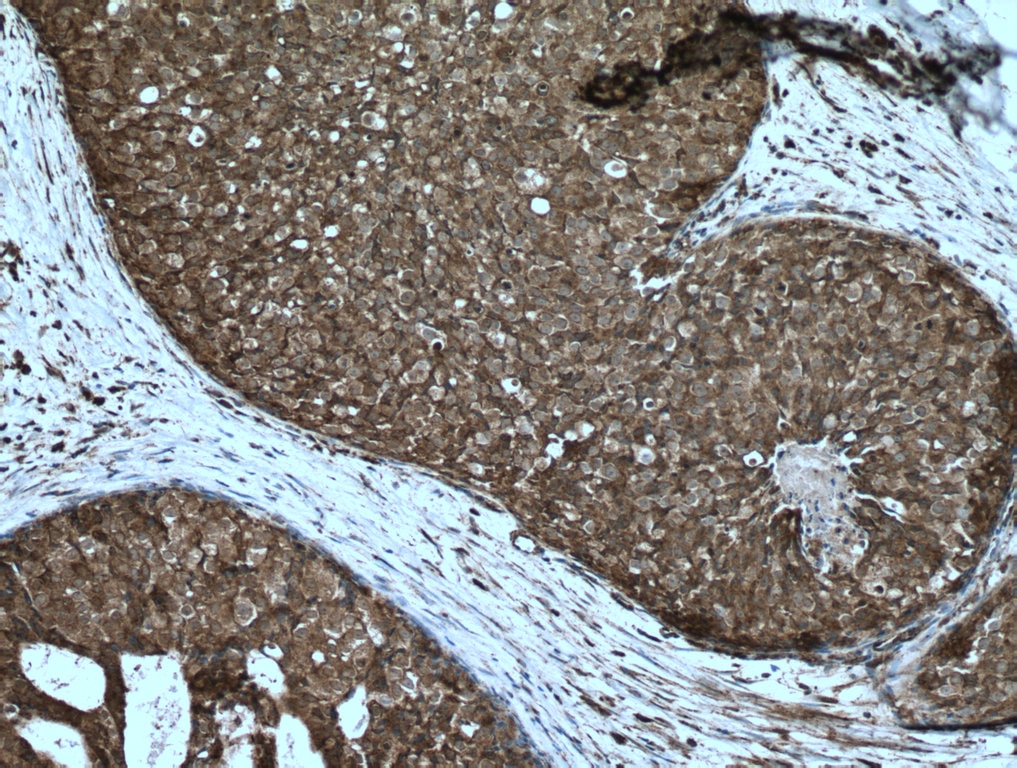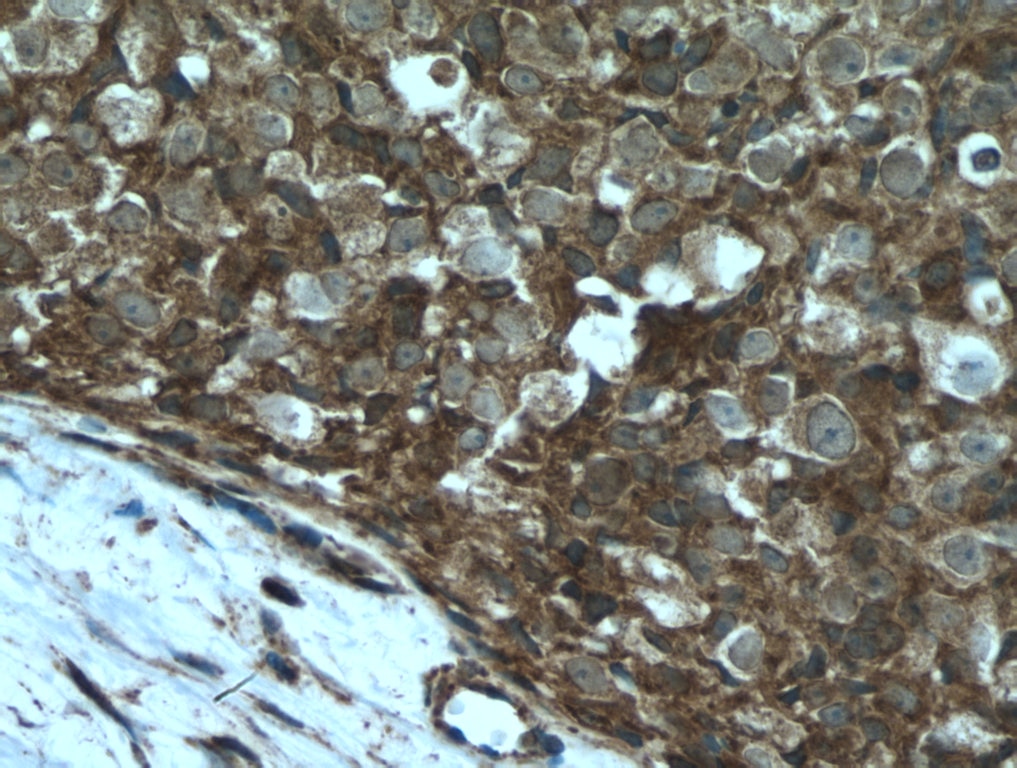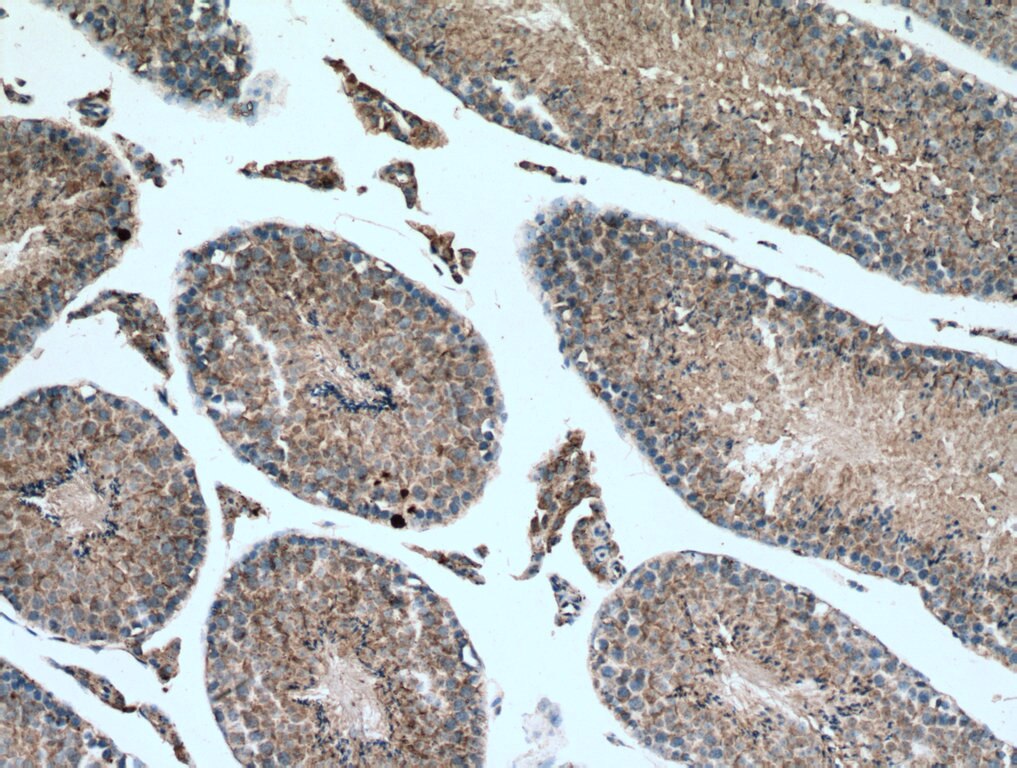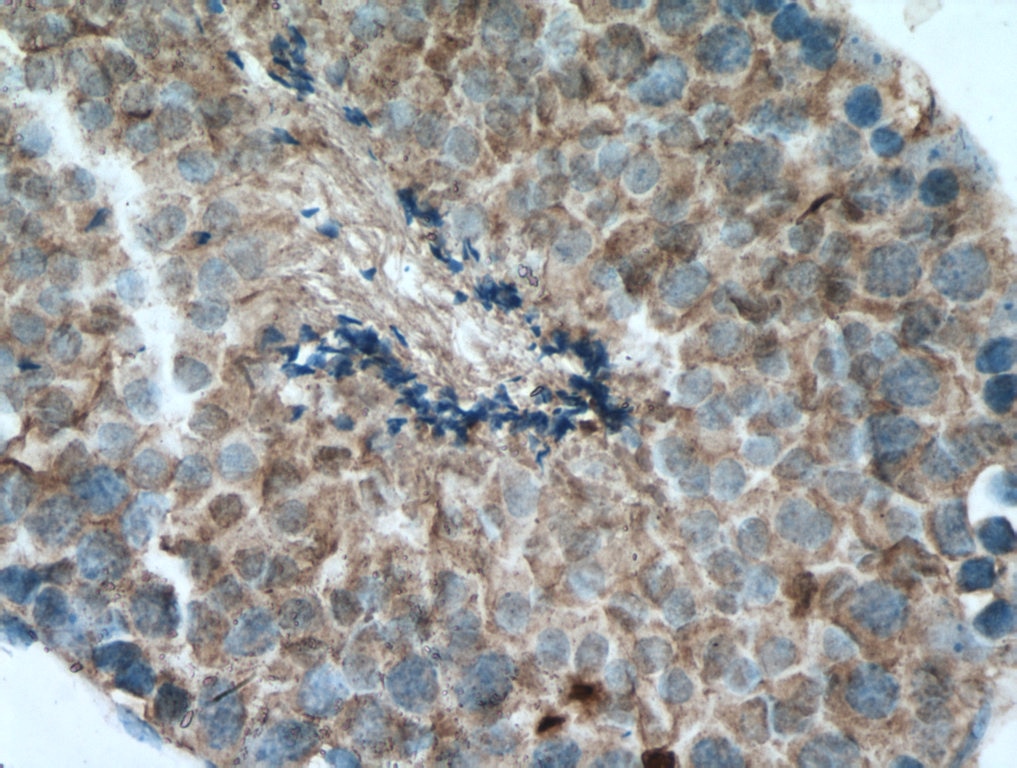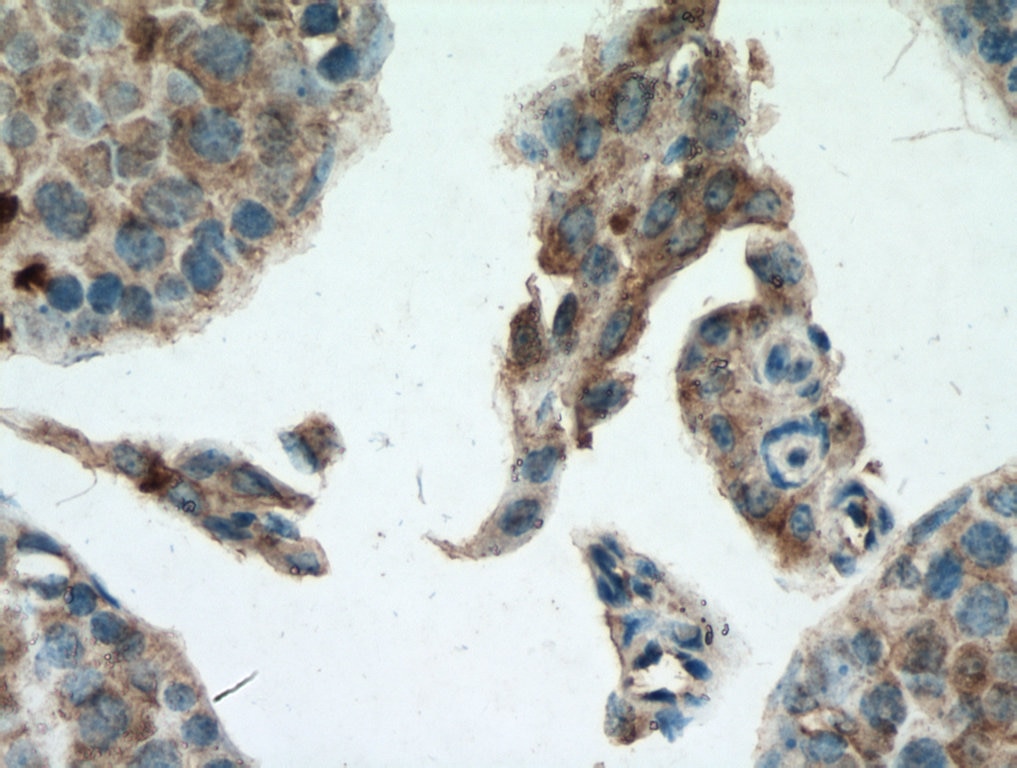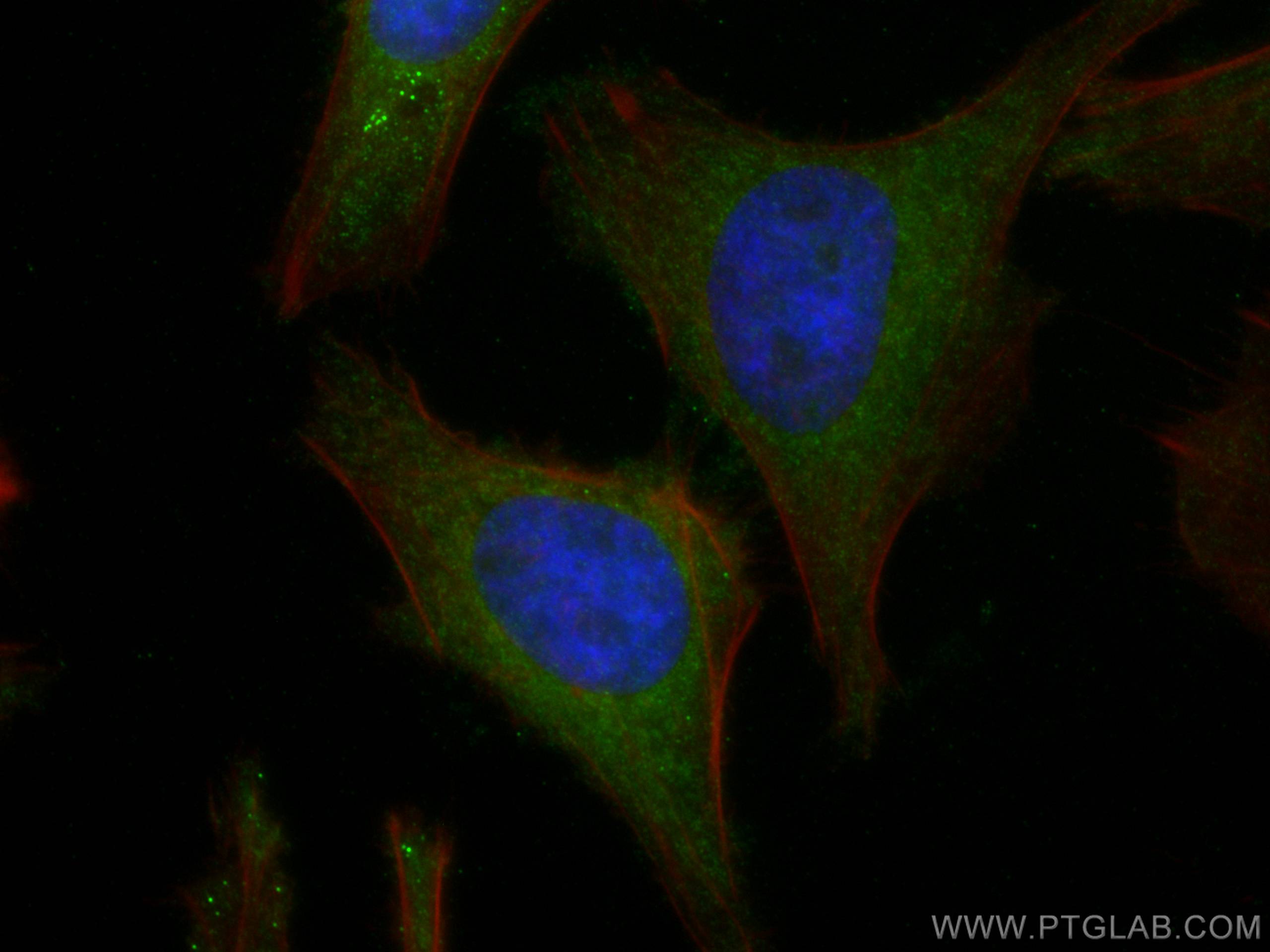- Featured Product
- KD/KO Validated
TXNRD1 Polyklonaler Antikörper
TXNRD1 Polyklonal Antikörper für WB, IHC, IF/ICC, ELISA
Wirt / Isotyp
Kaninchen / IgG
Getestete Reaktivität
human, Maus, Ratte
Anwendung
WB, IHC, IF/ICC, ELISA
Konjugation
Unkonjugiert
Kat-Nr. : 11117-1-AP
Synonyme
Geprüfte Anwendungen
| Erfolgreiche Detektion in WB | HeLa-Zellen, Jurkat-Zellen, MCF-7-Zellen, Mausherzgewebe, Rattenherzgewebe |
| Erfolgreiche Detektion in IHC | humanes Hodengewebe, humanes Mammakarzinomgewebe, Maushodengewebe Hinweis: Antigendemaskierung mit TE-Puffer pH 9,0 empfohlen. (*) Wahlweise kann die Antigendemaskierung auch mit Citratpuffer pH 6,0 erfolgen. |
| Erfolgreiche Detektion in IF/ICC | HeLa-Zellen |
Empfohlene Verdünnung
| Anwendung | Verdünnung |
|---|---|
| Western Blot (WB) | WB : 1:3000-1:10000 |
| Immunhistochemie (IHC) | IHC : 1:300-1:1200 |
| Immunfluoreszenz (IF)/ICC | IF/ICC : 1:50-1:500 |
| It is recommended that this reagent should be titrated in each testing system to obtain optimal results. | |
| Sample-dependent, check data in validation data gallery | |
Veröffentlichte Anwendungen
| KD/KO | See 5 publications below |
| WB | See 57 publications below |
| IHC | See 9 publications below |
| IF | See 4 publications below |
Produktinformation
11117-1-AP bindet in WB, IHC, IF/ICC, ELISA TXNRD1 und zeigt Reaktivität mit human, Maus, Ratten
| Getestete Reaktivität | human, Maus, Ratte |
| In Publikationen genannte Reaktivität | human, Maus, Ratte |
| Wirt / Isotyp | Kaninchen / IgG |
| Klonalität | Polyklonal |
| Typ | Antikörper |
| Immunogen | TXNRD1 fusion protein Ag1618 |
| Vollständiger Name | thioredoxin reductase 1 |
| Berechnetes Molekulargewicht | 55 kDa |
| Beobachtetes Molekulargewicht | 55 kDa |
| GenBank-Zugangsnummer | BC018122 |
| Gene symbol | TXNRD1 |
| Gene ID (NCBI) | 7296 |
| Konjugation | Unkonjugiert |
| Form | Liquid |
| Reinigungsmethode | Antigen-Affinitätsreinigung |
| Lagerungspuffer | PBS with 0.02% sodium azide and 50% glycerol |
| Lagerungsbedingungen | Bei -20°C lagern. Nach dem Versand ein Jahr lang stabil Aliquotieren ist bei -20oC Lagerung nicht notwendig. 20ul Größen enthalten 0,1% BSA. |
Hintergrundinformationen
Thioredoxin reductase-1 (TXNRD1) is uniquely capable of utilizing electrons from NADPH to recover the reduced state of TRX1. Interestingly, TXNRD1 is upregulated in many human malignancies and promotes cancer progression, and attenuation of TXNRD1 levels effectively suppresses the growth of tumor cells (PMID: 31384178). TXNRD1 is also upregulated in many human malignancies and functions as a prognostic factor for many tumors, such as oral squamous cell carcinomas, lung cancer, breast cancer, and astrocytomas. TXNRD1 protein levels were analyzed by inmmunoblotting. Bands of ~55 kDa for TXNRD1 were observed. IHC analysis suggested TXNRD1 was mainly located in the cytoplasm. (PMID: 28536696, PMID: 20584310)
Protokolle
| PRODUKTSPEZIFISCHE PROTOKOLLE | |
|---|---|
| WB protocol for TXNRD1 antibody 11117-1-AP | Protokoll herunterladen |
| IHC protocol for TXNRD1 antibody 11117-1-AP | Protokoll herunterladenl |
| IF protocol for TXNRD1 antibody 11117-1-AP | Protokoll herunterladen |
| FC protocol for TXNRD1 antibody 11117-1-AP | Download protocol |
| STANDARD-PROTOKOLLE | |
|---|---|
| Klicken Sie hier, um unsere Standardprotokolle anzuzeigen |
Publikationen
| Species | Application | Title |
|---|---|---|
Redox Biol Fast regulation of the NF-κB signalling pathway in human skeletal muscle revealed by high-intensity exercise and ischaemia at exhaustion: Role of oxygenation and metabolite accumulation. | ||
J Immunother Cancer Nanoparticle delivery of miR-21-3p sensitizes melanoma to anti-PD-1 immunotherapy by promoting ferroptosis. | ||
Cell Death Dis Elovanoid-N34 modulates TXNRD1 key in protection against oxidative stress-related diseases | ||
Cancer Res Natural allelic variations in glutathione peroxidase-1 affect it subcellular localization and function. | ||
Nucleic Acids Res Nucleolin binds to a subset of selenoprotein mRNAs and regulates their expression. | ||
Biomed Pharmacother TrxR/Trx inhibitor butaselen ameliorates pulmonary fibrosis by suppressing NF-κB/TGF-β1/Smads signaling |
